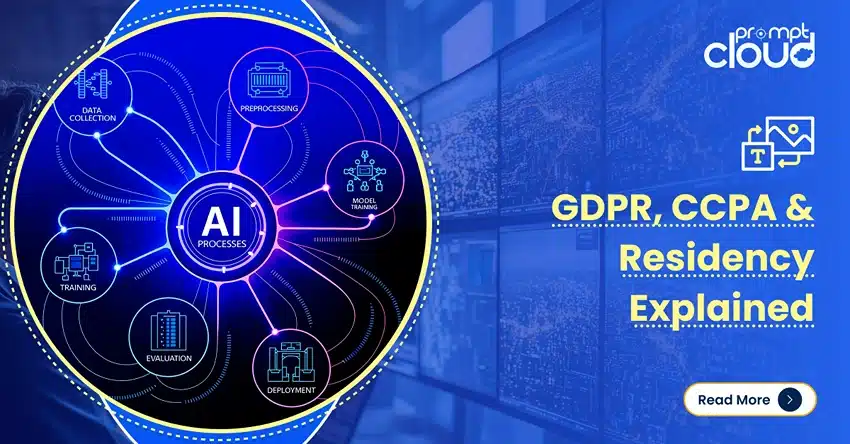What do the words GeoSpatial data even mean? In simple terms, a data set containing geographic data field to in form of location information such as coordinates, city, address, zip code, etc. can be considered as geospatial data. Generally these data sets are used to depict certain conditions (people, traffic, etc.) in a location at a particular point of time. Why is it important? Well, there can be a variety of reasons. Say there was a huge forest fire in a region. The geospatial data of the place for the last few days could give us valuable information that can lead us to finding the reason behind the untimely forest fire.
Why Scrape Geospatial Data?
There are several reasons as to why you might crawl Geospatial Data from the web. More and more companies are using analytics to solve complex problems troubling industries all over the globe. Advanced analytics, is a form of using data collected from different sources, and that is where geospatial data joins hands with other data sources to give a clearer picture. Here are a few examples of recent day innovations and uses of GeoSpatial data:
Predictive analytics
SAP has developed what it calls SAP HANA, an in-memory database and application platform. One of its use cases revolves around helping brands and organizations analyze geospatial data and predict how storms can affect certain regions. SAP has been collaborating with Esri, a leading company in Geological Information Services, and they together launched SAP HANA in combination with Esri’s Geodatabase. It allows customers to analyze geographic information using their business processes. This helps take actions more easily since data from other sources can be combined with Geospatial data and analyzed together.
SAP’s prototype calculates a risk prediction based on four indexes - soil, water, steepness, and vegetation. Regional governments can use the software to issue warnings to people living in high-risk areas. Different warnings like landslides or cave-ins can be predicted using the software and the findings can be communicated using public help systems during the occurrence of natural disasters.
Operational Intelligence
Operational intelligence uses analytics to boost business processes. Many companies that provide operational intelligence solutions, support the use of geospatial data among other data streams. One of the most simple instances is network companies using geospatial data to decide where to set up its mobile towers. Uniform placement of network towers is not always the best option. In case you have a small area which is at a higher elevation than the rest, you can set up a connectivity tower there, to reach a larger circumference. Population densities and man-made structures can also be important factors which you need to keep in mind when setting up towers. These things can be taken into account automatically when you use geospatial data.
Situational Intelligence
It is a technique that takes the help of large volumes of multidimensional real-time data as well as historical data in order to find and solve problems. Parts of the data are often geospatial reporting. Visualization and analysis of this data can help answer questions like why, where and how, related to certain events that occur suddenly. Utility companies would use such information to a pinpoint problems and get the nearest official to fix it.
Ground Analysis
Exploration of Geospatial data of areas taken over by ISIS shows how much of the land they had taken over, has been recovered, and which areas are currently prone to violence due to conflict between rebels and the terrorists. Such data can be of great help to aid agencies who would want to help those in need, but not want to get caught in the conflict. Such ground analysis can be done to benefit people by utilizing Geospatial data collected by satellites.
Geolocating Footage
Scraping Geospatial data can be useful for geolocating footage. Suppose you are watching a video with a weird looking building in which a couple of terrorists are hiding. You know the area, but not the exact location. You can cross check the building with the geospatial data from the area to pinpoint the building location.
Archiving Data
All geospatial data collected, might not be needed for immediate use, but can be archived. Especially data from areas that are under conflict, or war, can be deleted or hidden due to government or political interventions. This way, anyone with the data at a point of time in the future, might be able to conduct studies and support others with a very vital database, unavailable to the public.
Why is the use of different data sources recommended?
Geospatial data is not usually used in standalone form. It is primarily combined with other data sources. It is more likely used as a data to augment existing data – that is to make sure that no incorrect data creeps into the analysis and bolster the insights delivered from the analysis. Multiple data sources have a lot of benefits that people tend to overlook in the short run.
Collecting more specific data
When using more than one data sources, you can reduce data wastage by only collecting data that you need. For example, you collect geospatial data from a place, and you realize that certain fields are missing due to unavailability in the geospatial data. You can collect those through surveys from the residents who might easily fill up a form with 2-5 fields, but might ignore you in case you go to them with a twenty-page-long survey.
Improving data quality
Surveys or any other data that has been collected using human intervention cannot be relied upon completely. In these cases, having more than one data formats helps confirm anomalies in data or data fields that are most prone to small errors.
Deciphering data
A noise might be perceived as a gunshot by someone, while someone else might think that it is the sound of a generator blasting. A fire like image in the geospatial data of that instance might confirm the second thought. In this way, data collected from people about things that have taken place in the past can be backed up by geospatial data to get the right results and draw the correct conclusion.
Getting the whole picture
Online and offline are the two sources of information that together build facts today. Certain factors like social networks and chat-forums are becoming more and more important for brands. In such a situation, to get closer to the customer, you will need more than one data source. Geospatial data might show how opening new branches of a popular coffee shop increase customer footfall gradually. This, along with daily revenue bills might tell you what is the optimum distance that should be kept between two branches to make sure that new customers are attracted more, and the customers of one branch don’t shift to the new one.
How to Scrape Geospatial Data?
Scraping Geospatial Data is not simple. It is not an image or a text that you can crawl and download. Many websites such as EarthExplorer, present you the data in the form of an interactive map, but manually downloading data from such websites, is next to impossible. Unless you have a dedicated data scraping team that has at least worked with other data formats, trying to crawl Geospatial data might not bear fruits. Getting a dedicated development team to look after your web scraping needs is not an easy task. Maintaining the team will be a difficult and costly affair in itself, even if you manage to put together the team.
It would be better in such scenarios to approach service providers such as PromptCloud, with the coordinates and other requirements so that they can get you the data you need, in a format that you can use, so that you can focus on the business, while we focus on the data.



















